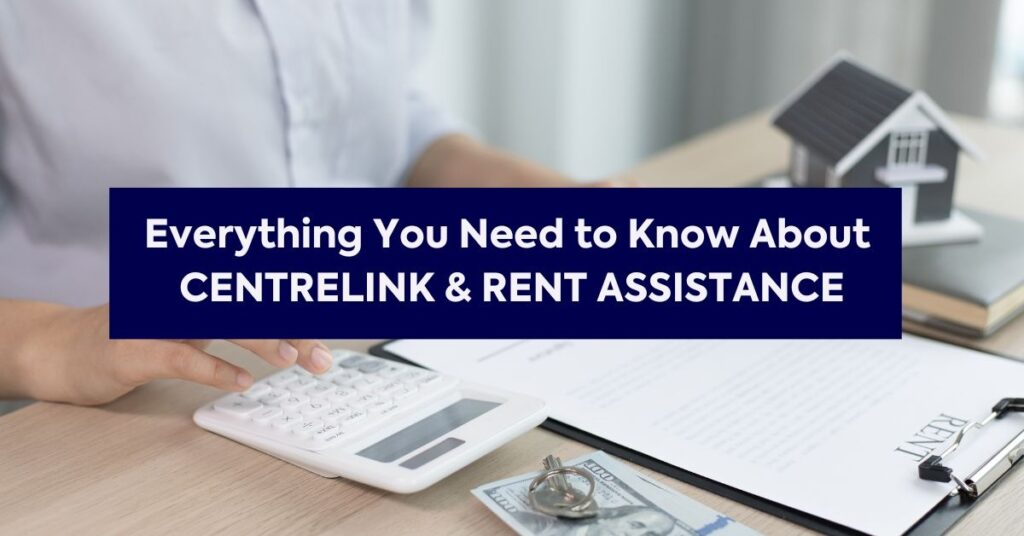Asset finance for business lets you secure the tools and equipment you need without draining your cash reserves. It spreads the cost over time and can even cover intangible assets like intellectual property. This guide explains how different finance methods work, their benefits, and how to choose the right lender.
Asset Finance for Business Growth
Asset finance for business can be a game-changer, especially for SMEs looking to expand. It’s about strategically using funding to acquire the assets you need without crippling your cash flow. Think of it as a smart way to invest in growth, rather than a drain on your existing resources. It’s not just about getting equipment; it’s about getting the right equipment to boost productivity and profitability.
Asset finance can be particularly useful for asset finance for new business ventures that might not have a long credit history or substantial capital reserves. It allows them to acquire essential assets early on, fuelling initial growth and establishing a solid foundation for the future.
Asset finance isn’t just a transaction; it’s a strategic partnership. It’s about finding a lender who understands your business goals and can tailor a solution that aligns with your growth trajectory. It’s about building a relationship that supports your long-term success.
Here’s a quick look at how asset finance can contribute to business growth:
- Access to Essential Assets: Acquire equipment, vehicles, or technology without large upfront costs.
- Improved Cash Flow: Preserve working capital for day-to-day operations and strategic investments.
- Increased Productivity: Upgrade to newer, more efficient assets to boost output and reduce downtime.
What Is Asset Finance and How Does It Work?
Okay, so you’re probably wondering what asset finance is. Well, simply put, it’s a way for businesses to get their hands on the equipment, vehicles, or machinery they need without shelling out a massive amount of cash upfront. Think of it as a clever alternative to traditional loans, specifically designed for acquiring assets. It’s like, instead of saving up for ages to buy that shiny new excavator, you can start using it now and pay it off over time.
Asset finance essentially uses the asset itself as security for the funding. This means the lender has a degree of protection, which can often translate to more favourable terms for you. It’s a pretty common way to acquire essential equipment and keep your business moving forward.
How does it all work, then? Here’s the gist:
- You identify the asset you need – could be anything from a fleet of vans to some fancy new computer systems.
- You find an asset finance provider and agree on a financing arrangement. This could be a lease, a hire purchase agreement, or something else (more on those later).
- The finance provider purchases the asset (or you might already own it, in the case of refinancing).
- You make regular payments to the finance provider over an agreed period. These payments cover the cost of the asset, plus interest and any fees.
- At the end of the term, depending on the type of agreement, you might own the asset outright, or you might return it to the finance provider.
Asset finance can be a real game-changer for businesses, especially SMEs. It allows you to invest in growth without tying up all your working capital. Plus, there can be some handy tax benefits too. It’s all about making smart financial decisions to help your business thrive.
It’s not a one-size-fits-all solution, though. There are different types of asset finance, each with its own pros and cons. It’s worth doing your homework to figure out which one is the best fit for your specific needs and circumstances.
Types of Asset Finance: Hire Purchase, Lease, and Refinancing
Okay, so you’re thinking about asset finance. Good move! But what kind is right for you? There are a few main types, and it’s worth understanding the differences. Let’s break down hire purchase, leasing, and refinancing.
Hire Purchase
Hire purchase (HP) is basically like buying the asset in instalments. You make regular payments over an agreed period, and once you’ve paid it all off, you own the asset outright. Think of it like a car loan, but for equipment. You get to use the asset straight away, which is a big plus. You’re responsible for maintenance and insurance, though. It’s a good option if you want to eventually own the asset and don’t mind the upfront costs being a bit higher than leasing.
Lease
Leasing is different. You’re essentially renting the asset for a set period. There are two main types of leases: finance leases and operating leases. With a finance lease, you’re responsible for the asset’s maintenance, and it often covers most of the asset’s useful life. An operating lease is more like a short-term rental, where the leasing company usually takes care of maintenance. Leasing can be great for cash flow management because the payments are usually lower than with hire purchase. Plus, you can often upgrade to newer equipment more easily.
Refinancing
Refinancing is where things get interesting. It involves using your existing assets to free up cash. There are a couple of ways to do this. One way is to use your assets as security for a loan. If you can’t repay the loan, the lender can take the asset. Another way is called sale and leaseback. You sell the asset to a finance company and then lease it back from them. This gives you a lump sum of cash upfront, and you continue to use the asset while making lease payments. It’s a handy way to unlock capital tied up in your equipment.
Choosing the right type of asset finance depends on your business needs and financial situation. Consider factors like whether you want to own the asset, how long you need it for, and your cash flow requirements. It’s always a good idea to get professional advice to make sure you’re making the best decision for your business.
Top Benefits of Asset Finance for SMEs and Growing Businesses
Asset finance can be a real game-changer for small and medium-sized enterprises (SMEs) and businesses that are expanding. It’s not just about getting the equipment you need; it’s about doing it in a way that supports your overall business strategy. Let’s look at some of the key benefits of asset finance for businesses.
- Improved Cash Flow: Asset finance lets you spread the cost of equipment over time, rather than paying a large sum upfront. This frees up your cash for other important things, like marketing, hiring staff, or investing in new product development.
- Access to the Latest Technology: Staying competitive often means having the most up-to-date equipment. Asset finance makes it easier to acquire new technology without straining your finances. This can lead to increased efficiency and productivity.
- Flexible Payment Options: Many asset finance agreements offer flexible payment terms that can be tailored to your business’s specific needs and cash flow patterns. This can include seasonal payment schedules or the ability to defer payments for a period.
Asset finance can be particularly powerful for growing businesses that need to move quickly without tying up significant amounts of capital. It allows you to acquire the assets you need to expand your operations and take advantage of new opportunities.
Consider this example. A small manufacturing company wants to upgrade its machinery to increase production capacity. Instead of taking out a large loan that would impact their cash flow, they opt for equipment financing. This allows them to acquire the new machinery, increase production, and pay for it over time, using the increased revenue generated by the new equipment. They can also replace or refinance an asset if needed.
Cash Flow Management and Working Capital Preservation
Okay, so let’s talk about how asset finance can help your business day-to-day, especially when it comes to cash flow. It’s not just about getting new equipment; it’s about smart money management.
One of the biggest headaches for any business owner is managing cash flow. You’ve got bills to pay, wages to cover, and then you need to think about investing in growth. It’s a constant balancing act. Asset finance can be a real game-changer here.
Think about it: instead of shelling out a huge chunk of cash upfront for a new piece of machinery, you can spread the cost over time with regular payments. This means you’re not draining your bank account all at once, and you’ve got more money available for other things, like marketing, hiring staff, or just having a bit of a buffer for unexpected expenses. It helps in working capital strategies.
Here are a few ways it helps:
- Preserves Working Capital: Asset finance lets you keep your cash reserves for other important areas of the business. This is super important, especially for smaller businesses that might not have huge amounts of capital sitting around.
- Predictable Payments: Knowing exactly what your payments are each month makes budgeting way easier. No nasty surprises.
- Flexibility: You can often structure the payments to suit your business’s cash flow. For example, you might be able to arrange lower payments during slower months.
Asset finance can be a really useful tool for managing your cash flow and preserving working capital. It allows businesses to acquire the assets they need without tying up large amounts of capital, which can then be used for other strategic investments or to cover day-to-day expenses.
It’s all about making your money work smarter, not harder. By using asset finance, you can free up cash that would otherwise be tied up in equipment and use it to fuel growth and expansion. It’s a win-win, really.
Tax Advantages and Capital Allowances
Okay, so let’s talk about the tax side of asset finance. It’s not the most thrilling topic, but it can seriously impact your bottom line. Basically, the Australian Taxation Office (ATO) lets businesses claim deductions for the decline in value of assets used to generate income. This is where capital allowances come into play, and asset finance can make claiming them a bit easier.
Think of it this way: instead of forking out a huge chunk of cash upfront and then slowly depreciating the asset, you might be able to structure your asset finance agreement to maximise your tax benefits. It’s all about timing and how the agreement is set up.
- Immediate Dedication for Small Businesses: If your business is classified as a small business (check the ATO’s current turnover threshold), you might be able to claim an immediate deduction for the full cost of the asset in the year you acquired it. This can be a massive cash flow boost.
- Depreciation: If you can’t claim the immediate deduction, you can still claim depreciation over the asset’s effective life. The depreciation rate will depend on the type of asset.
- GST: You can generally claim back the GST paid on the asset, which reduces the overall cost.
It’s super important to get proper tax advice from an accountant or tax professional. They can assess your specific situation and help you structure your asset finance agreement to take full advantage of the available tax benefits. Don’t just wing it – you could end up missing out on significant savings.
Asset finance agreements, particularly leases, can sometimes be structured in a way that the lease payments are tax-deductible. This can improve your business’s cash flow management in the short term. It’s worth exploring all options to see what works best for your business. And remember, when you’re thinking about business exit planning, understanding these tax implications is key to maximising your return.
Equipment Upgrades Without Large Capex: Scaling Business Operations
One of the biggest hurdles for growing businesses is acquiring new equipment. The upfront cost can be crippling, especially when you’re trying to manage cash flow. Asset finance offers a way around this, allowing you to upgrade your equipment and scale your operations without needing a huge capital expenditure.
Think about it: that new CNC machine you need to boost production? Or the upgraded software that will streamline your processes? These things cost money, and often, a lot of money. But what if you could get them without draining your bank account?
Here’s how asset finance helps:
- Preserves Working Capital: Instead of sinking all your cash into equipment, you spread the cost over time. This means you have more money available for day-to-day operations, marketing, and other growth initiatives. It’s about stretching your cash reserves.
- Access to the Latest Technology: Don’t get stuck with outdated equipment. Asset finance lets you acquire the newest models, improving efficiency and productivity. Staying competitive means having the right tools.
- Flexible Payment Options: Asset finance agreements can be structured to suit your budget and cash flow. This means you can find a payment plan that works for you, without putting undue strain on your finances.
Asset finance isn’t just about getting new equipment; it’s about investing in your future. It’s about having the tools you need to grow, without sacrificing your financial stability.
Imagine being able to take on bigger projects, improve product quality, and expand your services, all because you have access to better equipment. That’s the power of asset finance. It’s a smart way to scale your business and stay ahead of the competition.
Asset Finance vs Traditional Loans: Which Is Best?
Choosing between asset finance and a traditional loan can feel like navigating a maze, right? Both options aim to inject funds into your business, but they operate quite differently. It boils down to your specific needs and circumstances. Let’s break it down.
Key Differences
Asset finance is, at its core, secured against a specific asset. Think of it like this: you’re buying a shiny new excavator, and the finance is secured against that very excavator. If you can’t keep up with repayments, the lender can repossess the asset. Traditional loans, on the other hand, can be secured (perhaps against property) or unsecured, depending on the lender and your creditworthiness.
- Security: Asset finance uses the asset being financed as security; traditional loans may use other assets or be unsecured.
- Purpose: Asset finance is typically for acquiring specific assets; traditional loans can be used for a wider range of purposes.
- Approval: Asset finance approval often hinges on the asset’s value; traditional loan approval depends more on your overall financial health and credit history.
When to Choose Asset Finance
Asset finance shines when you need a specific piece of equipment or machinery. It’s particularly useful for SMEs that might not have a long credit history or substantial assets to offer as security for a traditional loan. Plus, it can free up your existing working capital. Need to replace or refinance an asset? Asset finance could be the way to go.
When to Choose a Traditional Loan
Traditional loans offer more flexibility in how you use the funds. If you need capital for general business expenses, marketing campaigns, or expanding into new markets, a traditional loan might be a better fit. Banks often assess your business loan operations and cash flow projections more thoroughly for these types of loans.
Cost Considerations
Interest rates, fees, and the overall cost of borrowing are crucial factors. Asset finance might have lower upfront costs but could have higher interest rates over the term. Traditional loans might have higher upfront costs but potentially lower interest rates, especially if secured. Always compare the total cost of both options before making a decision.
It’s important to remember that there’s no one-size-fits-all answer. The best option depends on your business’s unique situation, financial goals, and risk tolerance. Seeking advice from a financial advisor is always a smart move.
Example Scenario
Let’s say you run a trucking company. You need to upgrade your fleet. With asset finance, you could lease new trucks and dispose of them at the end of the lease. Alternatively, you could take out a traditional loan to purchase the trucks outright. The choice depends on your cash flow, long-term plans for the fleet, and appetite for ownership versus leasing.
Risks and Disadvantages of Asset Finance to Consider

While asset finance can be a great tool for business growth, it’s not without its potential downsides. It’s important to weigh these risks carefully before making a decision. Let’s have a look at some things you should think about.
One of the main risks is that you might not own the asset until the finance agreement is fully paid off, or in some cases, ever. This can impact your balance sheet and your ability to sell the asset if needed.
Another thing to keep in mind is that the finance terms are often quite long, usually more than a year. This means you’re locked into payments for an extended period, which could be a problem if your business circumstances change.
Here are a few more things to consider:
- If you can’t keep up with the payments, the finance provider might repossess the asset. This could seriously disrupt your business operations.
- You might be responsible for any damage to the asset, even if it’s not your fault. Make sure you have adequate insurance coverage.
- There could be restrictions on how you use the equipment, like annual mileage limits on a vehicle. Going over these limits could result in penalties.
It’s really important to read the fine print of any asset finance agreement. Understand exactly what you’re signing up for, including all the fees, charges, and potential penalties. Don’t be afraid to ask questions and get clarification on anything you’re unsure about.
How to Select the Right Asset Financing Option and Lender
Choosing the right asset financing and lender can feel like navigating a maze. There are so many options, and it’s easy to get lost in the details. But with a bit of planning, you can find a solution that fits your business needs perfectly. It’s about understanding what you need, what’s available, and how to compare different offers.
Assess Your Business Needs and Asset Requirements
Before you even start looking at lenders, take a good, hard look at your business. What assets do you actually need? What will they be used for? How will they contribute to your bottom line? Knowing the answers to these questions will help you narrow down your options and avoid getting talked into something you don’t need. Consider these points:
- What specific equipment or assets are required?
- What is the expected lifespan of the asset?
- What is your budget, and how much can you realistically afford in repayments?
Compare Different Types of Asset Finance
There are several types of asset finance, each with its own pros and cons. Hire purchase, leasing, and asset refinance are the most common. Understanding the differences is key to making the right choice. For example, asset refinance can be a great way to free up capital if you already own assets.
- Hire Purchase: You own the asset at the end of the term.
- Leasing: You rent the asset for a set period.
- Asset Refinance: You use existing assets as collateral to secure funding.
Research and Evaluate Potential Lenders
Not all lenders are created equal. Some specialise in certain types of assets or industries. Others may offer more competitive rates or more flexible terms. Do your homework and compare several lenders before making a decision. Look for lenders with a good reputation and a track record of working with businesses like yours. Consider these factors:
- Interest rates and fees
- Repayment terms and flexibility
- Customer service and support
Choosing the right asset finance option is a big decision. Don’t rush into it. Take the time to research your options, compare different lenders, and get professional advice if you need it. The right choice can help you grow your business and achieve your goals.
Unlocking Intangible Asset Finance: IP, Reputation, and Beyond

It’s not just about forklifts and trucks anymore. Businesses are increasingly recognising the value tied up in things you can’t touch – intellectual property, brand reputation, and even data. Figuring out how to get finance against these assets can be a game-changer, but it’s also a bit more complex than your standard asset finance deal.
Intangible assets are becoming a bigger part of company value, and knowing how to use them for finance is a smart move.
Think about it: a software company’s code, a fashion brand’s name, or a manufacturer’s patented process – these all have real worth. The challenge is turning that worth into accessible capital. It’s not as simple as getting a valuation on a piece of equipment, but it’s definitely possible.
Securing finance against intangible assets requires a different approach. It involves careful valuation, understanding the legal framework around IP, and finding lenders who are comfortable with the inherent risks. It’s about demonstrating the real, sustainable value of these assets to potential financiers.
Here’s what you need to consider:
- Valuation is key: Getting a solid, independent valuation of your intangible assets is the first step. This needs to be more than just a guess; it needs to be based on market data, potential revenue streams, and a clear understanding of the asset’s lifespan.
- Legal protection matters: Your IP needs to be properly protected through patents, trademarks, and copyrights. This gives lenders confidence that the asset has real value and can’t be easily copied or stolen.
- Find the right lender: Not all lenders are created equal. Some specialise in intangible asset finance and understand the nuances involved. Look for someone with experience in this area.
Intangible assets now total almost USD 80 trillion worldwide, making IP-backed finance essential for affordable capital. It’s a growing area, and businesses that can tap into it will have a significant advantage.
Making Asset Finance Work: Strategies for Smart Funding and Growth
Okay, so you’re thinking about asset finance. Good move! But just getting the finance isn’t the whole story. You need a plan to make it work for your business and help you grow. It’s about more than just acquiring equipment; it’s about using that equipment strategically to boost your bottom line.
Here’s the thing: asset finance can be a game-changer, but only if you approach it smartly. Let’s look at some ways to make sure you’re getting the most out of it.
- Align Asset Acquisition with Business Goals: Don’t just grab the shiniest new gadget. Make sure any asset you finance directly supports your business strategy. If you’re aiming to increase production by 20%, the asset needs to be capable of delivering that increase. It’s about strategic investment, not just spending money.
- Negotiate Favourable Terms: Don’t just accept the first offer you get. Shop around, compare rates, and negotiate the terms of your agreement. Even a small difference in interest rates can add up to significant savings over the life of the loan or lease. Consider the total cost of ownership, not just the monthly payment.
- Regularly Review and Optimise: Once you’ve got the asset, don’t just set it and forget it. Regularly review its performance and identify opportunities to optimise its use. Are you using it to its full potential? Are there ways to improve efficiency or reduce operating costs? This is where the real gains are made.
Asset finance is a tool, and like any tool, it’s only as effective as the person using it. A well-thought-out strategy, combined with careful planning and ongoing monitoring, is essential for maximising the benefits and achieving sustainable growth.
Think about it like this: you wouldn’t buy a new ute without thinking about what you’re going to use it for, right? The same goes for asset finance. Plan it out, negotiate hard, and keep an eye on things, and you’ll be well on your way to using asset finance to drive real growth in your business. Consider how public finance investment banking can assist with funding strategies for large-scale projects, ensuring efficient allocation of resources.
Effective asset management is key to maximising the return on your investment. It’s not just about having the equipment; it’s about using it efficiently and strategically to achieve your business goals. Think about how asset finance can help you replace or refinance an asset to boost productivity.
Getting the right gear loan can help your business grow. We show simple steps to make asset funding easy. Ready to learn more? Head to our website and get in touch.
Frequently Asked Questions
What is asset finance?
Asset finance is a form of lending where you use the equipment or assets you buy as security. This lets you get the gear you need without paying the full cost up front.
How does asset finance work?
You choose the asset you want, such as a vehicle or machine. The lender pays for that asset, and you repay them in regular instalments over an agreed period. The asset acts as security until you finish payments.
What are the main types of asset finance?
The three common forms are hire purchase, leasing, and refinancing. With hire purchase, you own the asset once all payments are made. Leasing means you rent the asset for a set term. Refinancing lets you turn an existing asset into cash to use elsewhere.
Who can apply for asset finance?
Small and medium-sized businesses, start-ups, and growing organisations can apply. Lenders look at factors like turnover, credit history, and the type of asset you want to fund.
What items can I buy with asset finance?
You can fund almost any business asset. Common examples include vehicles, computers, office fit-outs, manufacturing machinery, and specialised tools.
How long does the application process take?
That varies by lender but can range from a few business days to a couple of weeks. Having your financial statements and asset details ready will speed up approval.
What costs are involved in asset finance?
You’ll pay interest and may have arrangement or administration fees. The rate depends on the lender, the term of the loan, and the value of the asset you choose.
What risks should I consider?
If you miss payments, the lender can repossess the asset. You’re also committed to repay the loan even if your business faces a downturn, so plan your cash flow carefully.












